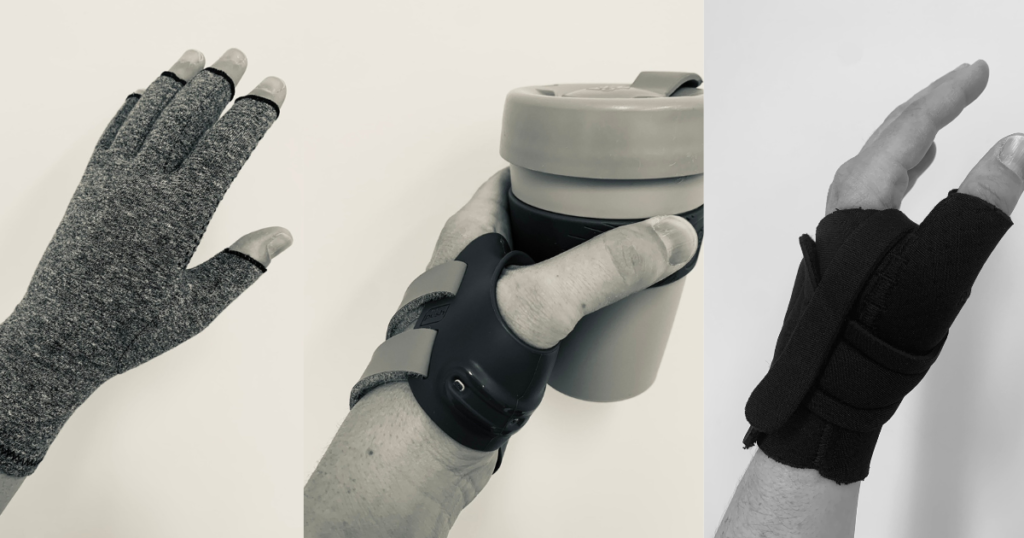One in seven Australians currently live with a form of arthritis, accounting for 4 million people nationally with the number expected to increase to 5.4 million by 2030. Arthritis can significantly affect a person’s quality of life. With no known cure, it is important to know how to sustainably manage symptoms through therapeutic and holistic treatment options. We talked to Accredited Hand Therapist and SportsCare Partner Louise Roantree about her experience working with arthritis in the Hand Clinic and the importance of a tailored approach.
First, what is arthritis and how does it occur?
There are over 100 different kinds of arthritis, with osteoarthritis the most common form seen in clients presenting at the Hand Clinic. Commonly referred to as ‘wear and tear’ arthritis, osteoarthritis occurs when the cartilage positioned at the ends of joints deteriorates and gives way due to friction, causing discomfort and pain as the joints lose lubrication and stiffen.
Osteoarthritis can be caused by a mix of genetic and environmental factors and can occur in clients of varying ages, though the risk of developing osteoarthritis symptoms increases in older age.
“A common place for osteoarthritis to present itself is at the base of the thumb within the first CMC (Carpometacarpal) joint”, says Louise. This is because of the role the thumb plays in opposing the other fingers on the hand. This type of osteoarthritis tends to be more prevalent in women as the surface area of the joints is smaller.
The role of Hand Therapy in managing arthritis
Arthritis is considered a chronic condition for many, meaning that the approach to treatment must be tailored towards maintenance rather than removing arthritis from the joint.
“The key message we tell our clients is that we can’t cure arthritis, we have to learn how to manage it,” says Louise.
The role of a Hand Therapist is key in the process of developing an appropriate treatment plan that is tailored to the client’s lifestyle and existing health conditions.
The steps of arthritis management

When tailoring a treatment approach to a client, Louise will factor in a range of potential management methods, all of which can be replicated at home to improve the quality of life of the client.
The first step is education. Louise says it is important that her clients understand that while arthritis will continue to be present in the joint, the symptoms can be reduced and managed by introducing new daily habits and appropriate treatment options.
The second step is prescribing suitable exercises that clients can use to reduce inflammation and discomfort over time, says Louise. Stability exercises are key in providing greater stability by increasing the strength of the joints while reducing pressure on the cartilage. Movement exercises also assist in lubrication by encouraging the flow of Synovial fluid, nourishing the joint. Stability exercises may also be prescribed for muscles to support the joints in conjunction with hot and cold contrast bathing, and posture work throughout the shoulder, neck, and core.
The third step involves identifying and discussing environmental factors. The pacing of activities is an important factor in managing arthritis symptoms.
“This is often the hardest part of the process for clients,” says Louise, as often clients are challenged to reduce or slow down their daily habits or behaviours that may be causing their arthritis symptoms or flare-ups.
The fourth step explores external treatment avenues like custom-fitted or prefabricated splints as well as compression gloves that help minimise the risk of further damage to the joints while maintaining a level of comfort and functionality. Such products are sold at the Hand Clinic and are personally recommended to clients based on the extent of the arthritis impact on the joint.
“There is no one-size-fits-all method to managing arthritis, as all cases will present slightly differently due to individualised aspects and influences”, says Louise.
Following a comprehensive assessment, a hand therapist will work closely with you to determine an appropriate treatment plan for your unique circumstances. Your therapist will guide you through each step of the treatment process and help you to decide which pathways may work best for reducing flare-ups and managing your symptoms in the longer term.
Interested in booking a consultation with Louise or one of our Hand Therapists to explore treatment options for arthritis? Book an appointment at our Hand Clinic or call 6286 6467.